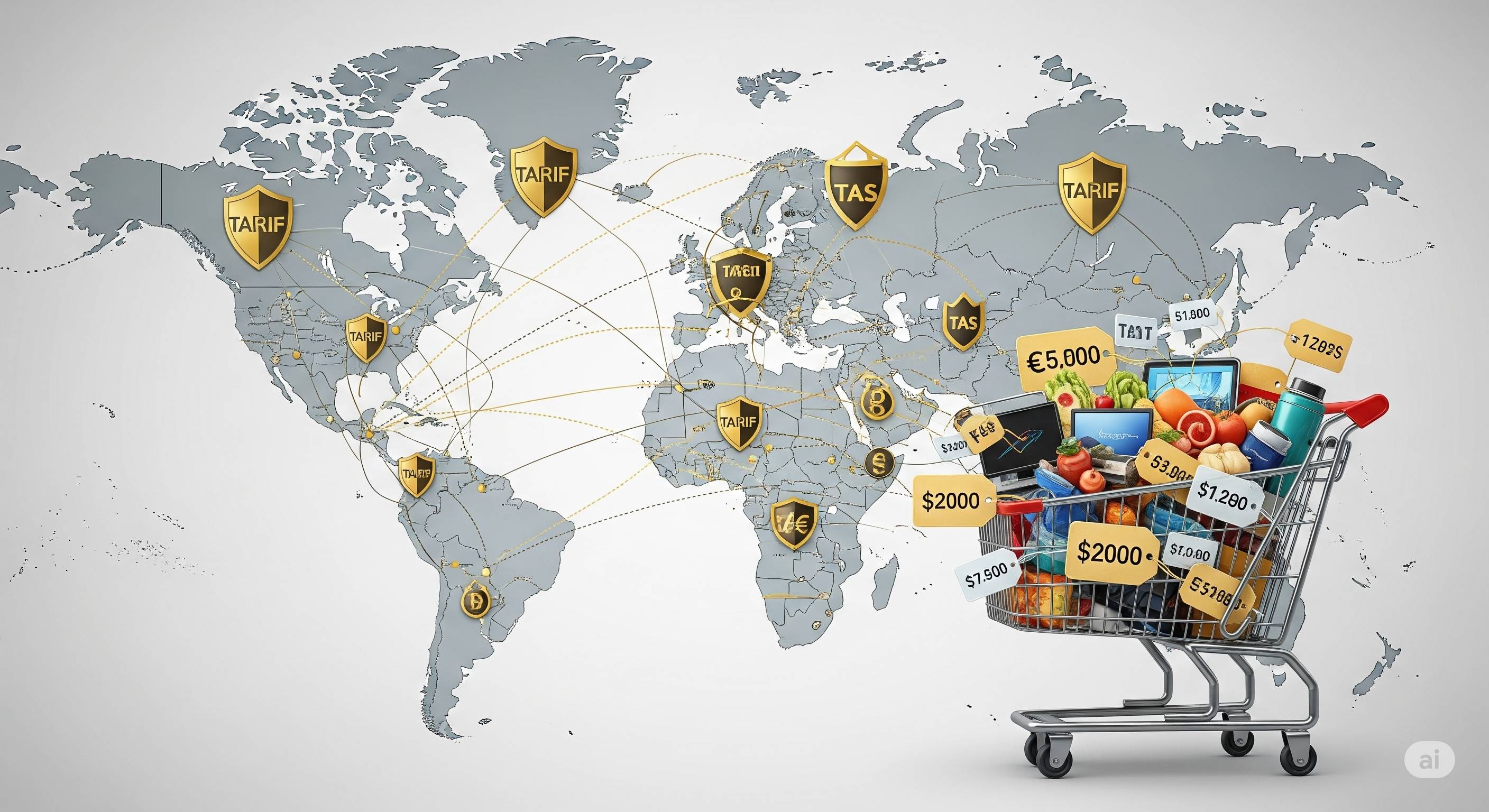How New Global Tariffs Will Impact Your Wallet This Week
A wave of new tariffs from the US on goods from the EU, Canada, and other major trading partners is creating economic uncertainty. This post breaks down what these trade policy changes mean for the average consumer, from the price of everyday products to investment strategies.
By j. freitas finance • August 10, 2025
3 min read

A new wave of tariffs has been implemented by the U.S. government on a broad range of imported goods from key trading partners like the European Union and Canada. While governments frame these policies as a way to protect domestic industries and raise revenue, the real effects often hit closer to home, directly impacting the price of products we buy every day.
This week, as these new tariffs take hold, it’s crucial for consumers to understand what’s changing and how to prepare their finances for the ripple effects.
What Are the Tariffs and Who Pays for Them?
Tariffs are essentially taxes on imported goods. When a country imposes a tariff, it’s the domestic businesses—the importers—who pay this tax to the government. However, these costs are rarely absorbed by the businesses themselves. Instead, they are typically passed on to the consumer through higher prices.
For instance, a 15% tariff on a European-made car doesn't just affect the car company; it means the dealership has to pay more to import the vehicle, and that cost is then reflected in the final sticker price you see on the lot.
The Impact on Your Daily Spending
The effects of these tariffs are widespread and will likely show up in your weekly shopping and larger purchases. Here’s a breakdown of some of the key areas being affected:
- Apparel and Footwear: The new tariffs are expected to disproportionately hit clothing and textiles. Some analysts are forecasting a temporary spike in shoe prices by as much as 39% and apparel by 37%, before settling at a permanently higher level.
- Food and Beverages: Products that the U.S. doesn't produce in sufficient quantities, such as bananas and coffee, are likely to see price increases. Alcoholic beverages are also on the list, with European wines and spirits facing new duties. The U.S. Wine Trade Alliance has warned that a 15% tariff on EU products could lead to European wines costing 30% more in September.
- Cars and Electronics: While some luxury automakers had already been applying surcharges due to previous trade disputes, the new tariffs create further uncertainty. The cost of auto parts could rise, impacting both new car prices and the cost of repairs. Similarly, while tariffs on semiconductors and pharmaceuticals are currently at zero, the potential for them to rise looms over these critical sectors.
Strategies for the Financially Savvy Consumer
In this environment of rising prices and economic uncertainty, here are some practical steps you can take to protect your finances:
- Re-evaluate Your Budget: Take a close look at your monthly spending. With the cost of groceries, clothing, and other consumer goods on the rise, you may need to adjust your budget to accommodate these new expenses.
- Delay Major Purchases (If Possible): If you were planning to buy a new car or other big-ticket item that relies on imported components, consider waiting to see how the market adjusts. Prices could be volatile in the short term.
- Investigate Local Alternatives: Tariffs are designed to make domestic goods more attractive. When shopping for products, see if there are high-quality, domestically-produced options that might now be more competitively priced.
- Stay Informed: The tariff landscape is constantly changing, with new negotiations and potential retaliatory tariffs from other countries. Keeping an eye on the news will help you anticipate future price hikes and make informed decisions about your spending and investments.
Conclusion
The latest round of global tariffs is more than just a political talking point—it's a direct tax on consumers. By understanding where these costs are coming from and how they will affect your spending, you can take proactive steps to navigate this new economic landscape and protect your financial well-being.